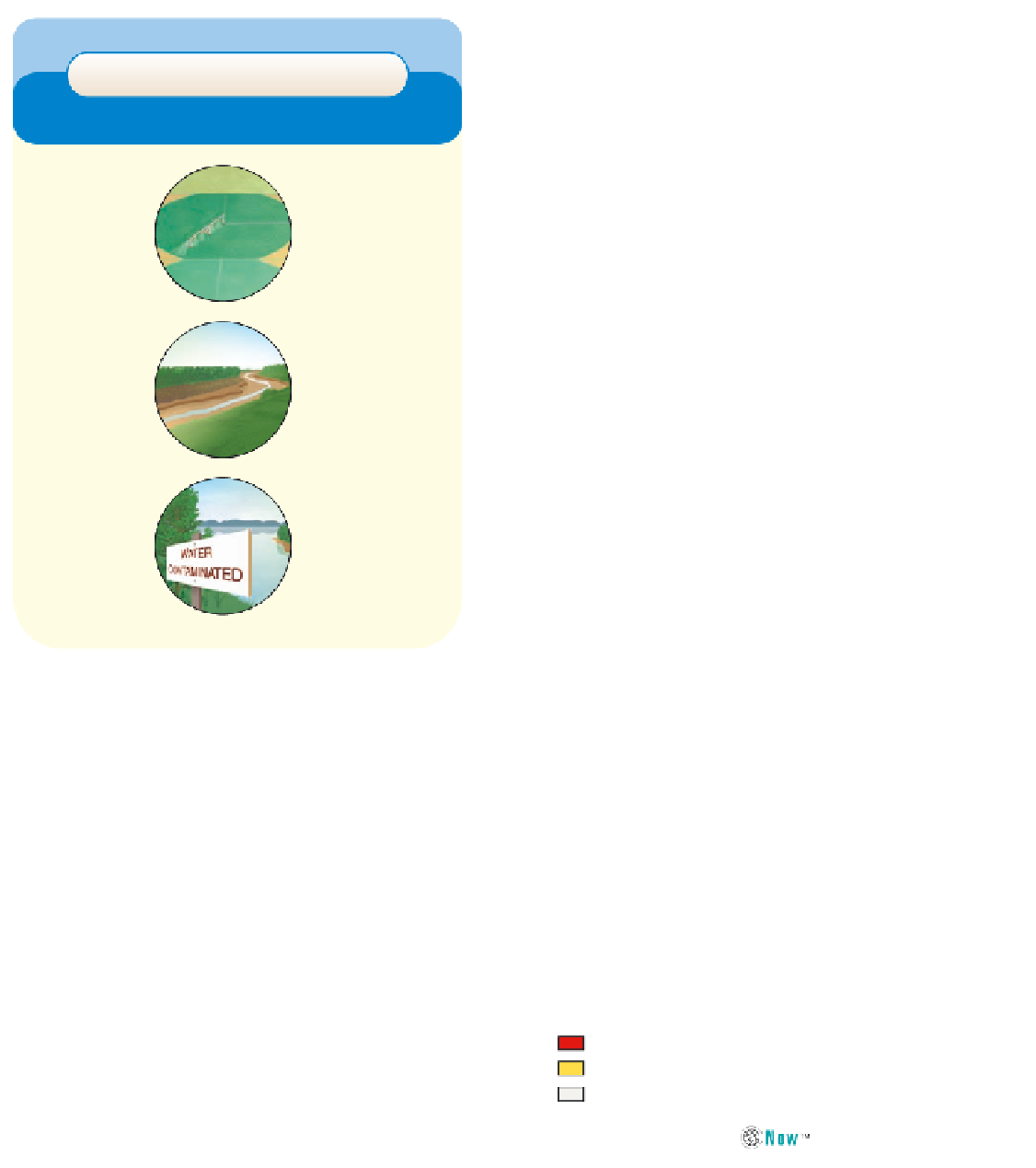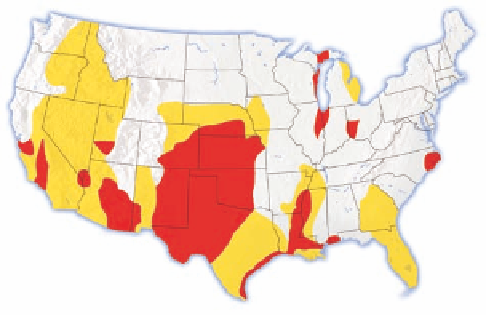Environmental Engineering Reference
In-Depth Information
Saudi Arabia is as water-poor as it is oil-rich. It
gets about 70% of its drinking water at a high cost
from the world's largest desalination complex on its
eastern coast. The rest of the country's water is
pumped from deep aquifers, most as nonrenewable as
the country's oil. This water-short nation wastes much
of its scarcest resource to grow irrigated crops on
desert land and to fill large numbers of fountains and
swimming pools that let precious water evaporate into
the hot, dry desert air. Hydrologists estimate that be-
cause of the rapid depletion of its fossil aquifers, most
irrigated agriculture in Saudi Arabia may disappear
within 10-20 years.
In the United States, groundwater is being with-
drawn at four times its replacement rate. The most
serious overdrafts are occurring in parts of the huge
Ogallala Aquifer, extending from southern South
Dakota to central Texas, and in parts of the arid South-
west (Figure 11-14). Serious groundwater depletion is
also taking place in California's water-short Central
Valley, which supplies half the country's vegetables
and fruits.
Groundwater overdrafts near coastal areas can
contaminate groundwater supplies by allowing salt
water to intrude into freshwater aquifers used to sup-
ply water for irrigation and domestic purposes (Fig-
ure 11-15). This problem is especially serious in coastal
areas in Florida, California, South Carolina, and Texas.
Figure 11-16 lists ways to prevent or slow the problem
of groundwater depletion.
T rade-Offs
Withdrawing Groundwater
Advantages
Disadvantages
Good source of
water for drinking
and irrigation
Aquifer depletion
from overpumping
Sinking of land
(subsidence) when
water removed
Available year-
round
Polluted aquifers
unusable for
decades or centuries
Exists almost
everywhere
Saltwater intrusion
into drinking water
supplies near coastal
areas
Renewable if not
overpumped or
contaminated
Reduced water flows
into streams, lakes,
estuaries, and
wetlands
No evaporation
losses
Cheaper to
extract
than most
surface waters
Increased cost,
energy use, and
contamination from
deeper wells
Figure 11-13
Trade-offs:
advantages and disadvantages
of withdrawing groundwater.
Critical thinking: pick the single
advantage and disadvantage that you think are the most
important.
Trade-Offs: Advantages and Disadvantages
of Withdrawing Groundwater
Most aquifers are renewable sources unless water is
removed faster than it is replenished or becomes
contaminated.
Aquifers provide drinking water for about one-fourth
of the world's people. In the United States, water
pumped from aquifers supplies almost all of the drink-
ing water in rural areas, one-fifth of that in urban ar-
eas, and 43% of irrigation water.
Relying more on groundwater has advantages
and disadvantages (Figure 11-13). Aquifers are widely
available and are renewable sources of water as long as
the water is not withdrawn faster than it is replaced and
as long as the aquifers do not become contaminated.
But water tables are falling in many areas of the
world because the rate of pumping out water (mostly to
irrigate crops) exceeds the rate of natural recharge from
precipitation. The world's three largest grain-produc-
ing countries—China, India, and the United States—
are overpumping many of their aquifers.
Groundwater
Overdrafts:
High
Moderate
Minor or none
Active Figure 11-14
Natural capital degradation:
areas of
greatest aquifer depletion from groundwater overdraft in the
continental United States. Aquifer depletion is also high in
Hawaii and Puerto Rico (not shown on map). This practice
causes the land below the aquifer to subside or sink in most of
these areas.
See an animation based on this figure and take a
short quiz on the concept.
(Data from U.S. Water Resources
Council and U.S. Geological Survey)







